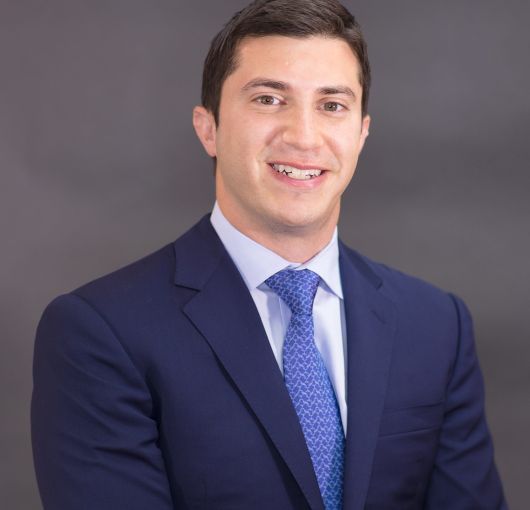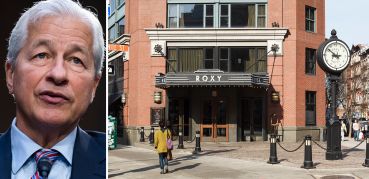What’s in a B-Piece? Morgan Properties’ Jason Morgan Breaks It Down
How buying subordinate Freddie Mac securities supplements an apartment landlord's national portfolio.
By Matt Grossman January 30, 2020 12:19 pm
reprints
When a landlord gets a mortgage on an apartment building, there’s a good chance that either Fannie Mae or Freddie Mac (FMCC) — two giant agencies now under government conservatorship — will play a role.
Freddie Mac in particular buys groups of multifamily mortgages and securitizes them, selling the senior debt to investors and offering them a guarantee that they’ll get paid back on time.
But in these transactions, known as K-deals, Freddie Mac doesn’t apply its guarantee to the entire capital stack. Typically, it only backs the most conservative part, usually the least-risky 60 percent of the property’s value, which takes the form of senior debt.
A smaller but crucial piece of the securitization is the B-piece: the riskiest 5 percent of a transaction’s debt component. The investors who buy a Freddie Mac B-piece are the first lenders to take a loss if something goes wrong with the deal. In exchange, they earn higher returns than senior lenders.
The rewards are there — if you have an appetite for the risk, and Jason Morgan has found that he does. That’s in part because he’s already an experienced multifamily landlord in his own right: His company, Morgan Properties, owns roughly 75,000 apartments, concentrated in the Northeast.
Two years ago, the King of Prussia, Pa.-based company dove headfirst into the B-piece space, often buying the junior debt on its own properties. The strategy helps offset debt service payments that Morgan would owe anyway. That makes it a nifty way, in effect, to lower borrowing costs.
Morgan spoke by phone with Commercial Observer this month about how he decided to take the plunge into B-piece investing and shared his thoughts on a multifamily sector beset nationwide by a move toward greater rent regulation.
Commercial Observer: What’s Morgan Properties’ background? The company has quite a life outside of B-pieces.
Jason Morgan: We own and manage a portfolio of 75,000 units across 15 states, which makes us the fifth largest owner in the country, and we are the largest holders in the state of Pennsylvania — our home state — Maryland and New York. And we’re one of the top two owners in the state of New Jersey. So, we’ve been a very active multifamily investor since the company was founded back in 1985.
How did you first embark on B-piece investing?
We have been probably the most active multifamily investor since 2012. We’ve acquired a little over $7 billion of transaction volume across 50,000 units. But we launched our credit platform in September 2017, and we have closed on nine K-series B-pieces across $8.5 billion of total loans, which carry a face value of roughly $637 million. We’ve probably been one of the more active Freddie Mac K-investors over the last 24 months.
Why is it a space that appeals to you?
It is a perfect alignment within our own portfolio. Being a multifamily expert, buying across the capital stack just makes sense. We think there’s a superior risk-adjusted return there. In the Freddie Mac K-deal space, the loans that makeup a given securitization often have a very similar makeup to what we pursue on the acquisition side.
So is it right to understand this as a way to gain more exposure to properties you already like?
In fact, sometimes we might be the second bidder on an acquisition deal that we just couldn’t get comfortable with. But then we’ll see the loan [on that property] on the debt side, in its [subsequent] securitization. By investing in the Freddie Mac K-program B-piece, we typically sit from 65 percent to 70 percent in the capital stack. And we earn an attractive risk-adjusted return by being in a debt position.
Is there any distinction you make in your attitude towards equity investments versus B-piece deals?
We take an owner’s mentality to multifamily credit investing. We complete extensive due diligence on each of the assets in a given pool. We have the ability to leverage our company’s expertise, so we visit each and every property, and we take an active role in pool composition. We also actively pursue opportunities where a securitization has a significant concentration of Morgan properties loans. That provides us with further confidence in these investments.
To be clear, you’ll finance a property you own with Freddie Mac debt. Then Freddie Mac securities the debt, and you buy the junior portion of that securitization?
Candidly, we’ve actively pursued opportunities where Morgan properties loans represented a significant concentration of the total collateral. Since September 2017, of the $8.5 billion in K-deals we have bought, 16 percent, or $1.4 billion, were Morgan Properties assets. It’s almost just doubling down on the investment opportunity. Clearly, we have an appetite and excitement for the opportunity on the equity side, and to also pursue it as a debt investor, we’re just that much more confident in it.
How does that affect other investors in the deal?
Morgan has an exemplary track record in the industry as a borrower of choice. And having a best-in-class borrower in a securitization is always the preference. So, having us in there is what we try to pursue.
What’s your process like before you pull the trigger on a K-deal B-piece?
From an underwriting standpoint, Freddie Mac K-deals are a very granular process. At the end of the day, you are levered to the worst loan in your pool. So, you need to underwrite going loan by loan, which certainly gives our company a competitive advantage given our size. We know how to underwrite multifamily. When we go through a securitization and re-underwrite every single one of the loans, we have a high level of certainty that the loan will perform.
There’s been a lot of talk around the country about more rent regulation, especially in large urban markets. As a multifamily owner, what’s your take on the issue?
There’s a huge affordability problem in the country. From my perspective, rent control will not be the solution to it. In fact, rent control just exacerbates the housing shortage problem. What needs to happen is collaboration between politicians and owners like Morgan to create programs that actually go to the core of the issue: that promote more development of affordable housing.
Critics of the rules say that they might discourage investment in existing properties.
We provide an attractive product at a reasonable price, and we invest in technology to make housing costs cheaper for our residents. We invest in energy efficiency to bring down their energy costs. We try to make their lives better. These are difficult problems that will not just go away [with rent regulation].
Pennsylvania is right in our backyard here in New York City, but it tends not to get the same level of attention as New Jersey or Connecticut. What should New Yorkers in the industry know about doing business in that state?
We actually just transacted on the largest transaction in Pennsylvania history, which was the Lantern portfolio. That was about an $891 million transaction in suburban Philadelphia and Alexandria, Va., across 4,100 units. It was a very large transaction for Pennsylvania. Typically, suburban Philadelphia markets are owned by long-term owner/operators that hold forever. This portfolio was more of a generational opportunity to buy in bulk in some of the best markets in suburban Philly: Devon, Conshohocken, Bryn Mawr. Locations that really don’t come up very often. We’re going to continue to be active in suburban Philly.
Just curious, as someone who’s a savvy operator on the equity and the finance side — what was your background before Morgan?
The company was actually started by my father in 1985. My brother John and I represent the second generation. I went to Wharton for undergrad, studying finance and real estate. I always knew I wanted to come back into the family business when I could bring additional value and a different perspective. I first went to Goldman Sachs in the real estate investment banking group, where I learned structuring. [I was] working on vastly different products, not just multifamily but across all the different industries. I then went to Och-Ziff [now Sculptor Capital Management] in their real estate private equity fund, where I worked on some highly sophisticated real estate structuring transactions. I’ve been at Morgan ever since.


